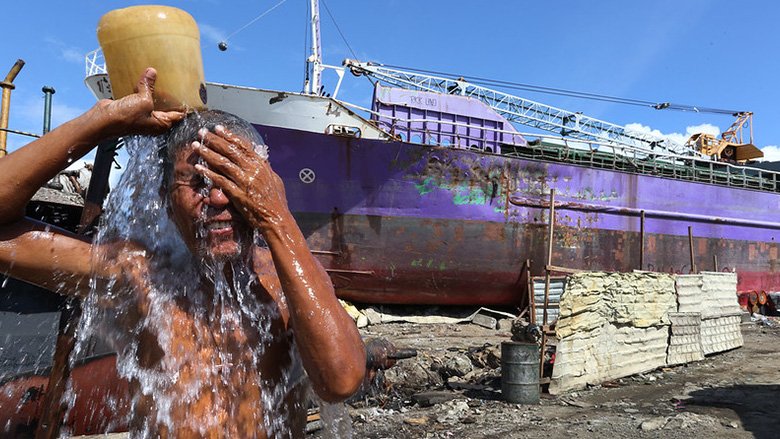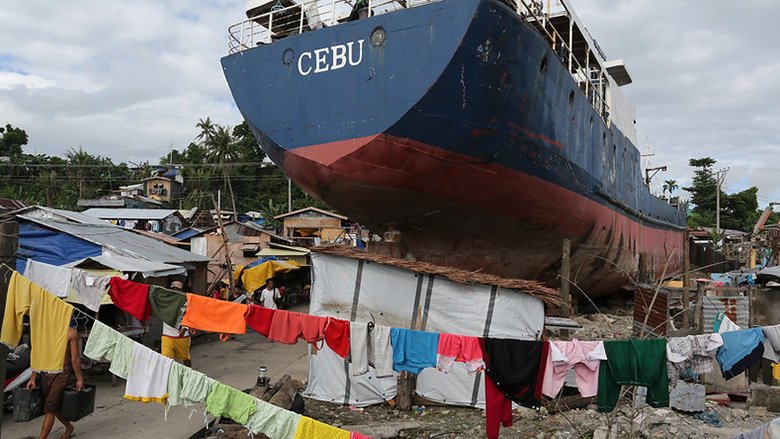In the wake of a natural disaster, countries need to immediately access funds to rebuild damaged infrastructure and re-establish critical government services, but the immediate aftermath of a disaster is often when financial liquidity constraints are at the highest. The time gap between the occurrence of a natural disaster and access to funding can be costly, exacerbating poverty through impacts on health, mobility, and access to education.
In countries regularly exposed to natural disasters, including health-related events, a Development Policy Loan with a Catastrophe Deferred Drawdown Option (Cat DDO) can provide expedient financing following a disaster. A Cat DDO is a contingent financing line that provides immediate liquidity to countries to address shocks related to natural disasters and health-related events. It serves as early financing while funds from other sources such as bilateral aid or reconstruction loans are being mobilized.
On November 17, 2021, the World Bank approved the Fourth Disaster Risk Management Development Policy Loan with a Catastrophe-Deferred Drawdown Option (CAT-DDO 4) of $500 million for the Government of Philippines. This new line of credit is helping strengthen the Philippines’ institutional and financial capacity to manage risks from climate change, natural disasters, and disease outbreaks.
The Philippines is highly vulnerable to natural disasters due to its geography. The majority of the country’s total land area and nearly three fourths of the Filipino population are vulnerable to multiple hazards, such as typhoons, earthquakes, floods, storm surges, tsunamis, volcanic eruptions, and landslides. In the past three decades, natural disasters have negatively impacted 120 million people and resulted in 33,000 deaths. According to World Risk Index 2020, the Philippines ranks ninth globally in terms of disaster risk, second highest among Asian countries.
Through a Cat DDO, the Philippines can access funds upon the declaration of a national State of Calamity due to an imminent or occurring natural catastrophe or a declaration of a State of Public Health Emergency. The loan is available for a period of three years and can be renewed for up to a total period of 15 years. The past Cat DDOs have all been successfully disbursed to propel the Philippines towards recovery in the aftermaths of disasters such as Tropical Storm Washi (2011) and Tropical Cyclone Mangkut (2018), as well as the COVID-19 pandemic. The latest CAT-DDO 4 has also been disbursed after Typhoon Rai, which battered the country in December 2021.
In addition to providing immediate liquidity in the aftermath of severe disasters, the Cat DDOs have, more importantly, provided access to technical support from the World Bank in strengthening overall DRM policy reforms and developing institutional capacity to implement the reforms at the national and local levels. Through the Third Cat DDO, the “Ready to Rebuild (R2R): Disaster Rehabilitation and Recovery Program” was developed and launched, with support from the technical assistance (TA) grant, “Building a Culture of Disaster Preparedness at the Local Level”, provided through the Global Facility for Disaster Reduction and Recovery and Japan-World Bank Program for Mainstreaming Disaster Risk Management in Developing Countries.
The R2R training program has been providing manuals, guidance, and training sessions to assist the country’s Local Government Units (LGUs) in developing Local Disaster Rehabilitation and Recovery Plans based on the national Disaster Rehabilitation and Recovery Planning Guide, developed by the Government of Philippines with technical support from the World Bank. The training program covers the use of GeoRiskPH integrated multi-hazard database, to improve the local climate, disaster, and health-related baseline data sharing for risk-informed planning. The training program also includes the development of Local Disaster Risk Financing Strategies of Local Governments, which will speed up access to national disaster funds following a disaster, in order to finance Local Disaster Rehabilitation and Recovery Plans. Several online R2R training sessions have already been provided to representatives of LGUs across the Philippines.
During the ongoing COVID-19 pandemic, the TA grant was further leveraged to provide support to the Government in developing an “LGU Guide for Rehabilitation & Recovery from COVID-19”. The Philippine Government, with support from the World Bank, was able to quickly prepare a customized guide for COVID-19 recovery.
These efforts to support the Government of the Philippines in strengthening the country’s disaster response and recovery planning are continuing through CAT-DDO 4. The Japan-World Bank Program for Mainstreaming Disaster Risk Management in Developing Countries will also continue to support the Government of the Philippines in addressing more complex challenges in managing climate, disaster, and health-related risks.
Related:
Japan-World Bank Program for Mainstreaming Disaster Risk Management in Developing Countries
The Philippines is “Ready to Rebuild” in the aftermath of Typhoon Rai
Resources:
Ready to Rebuild (R2R) Webpage
Ready to Rebuild (R2R) Workbook


